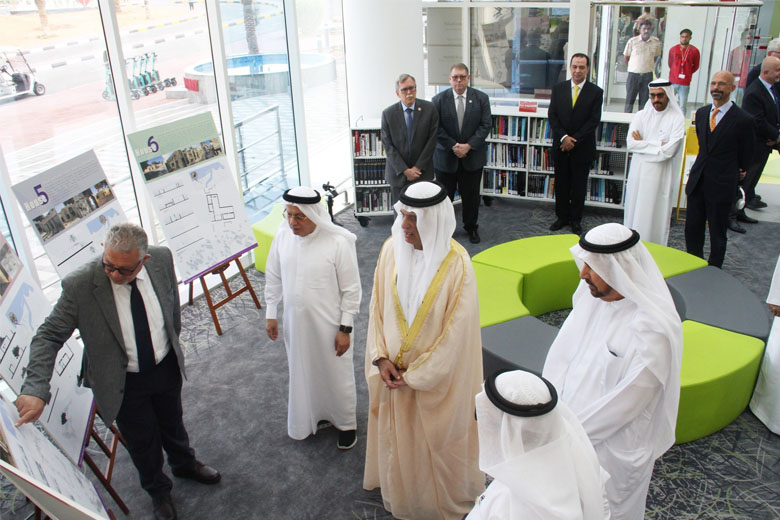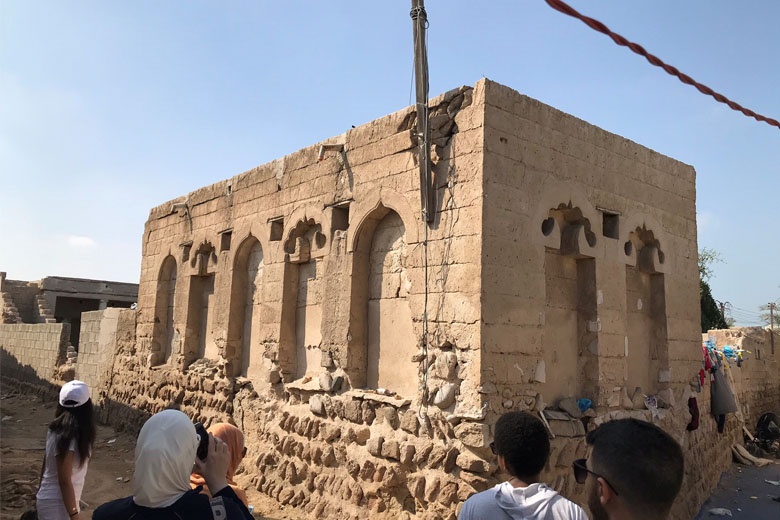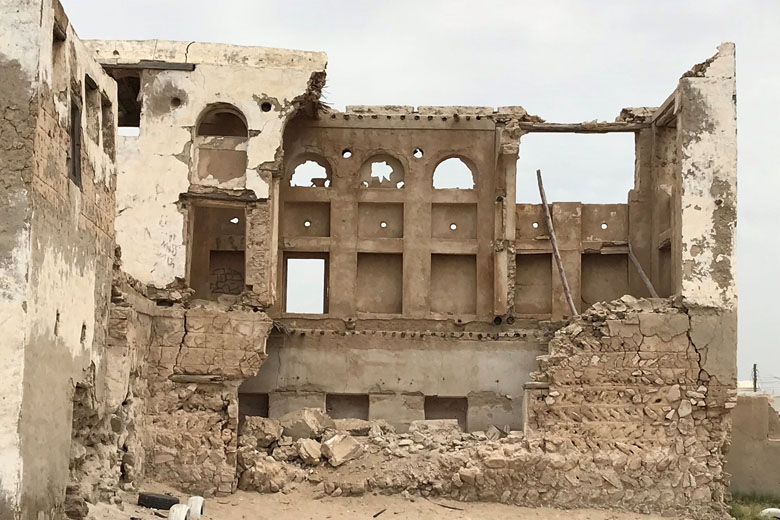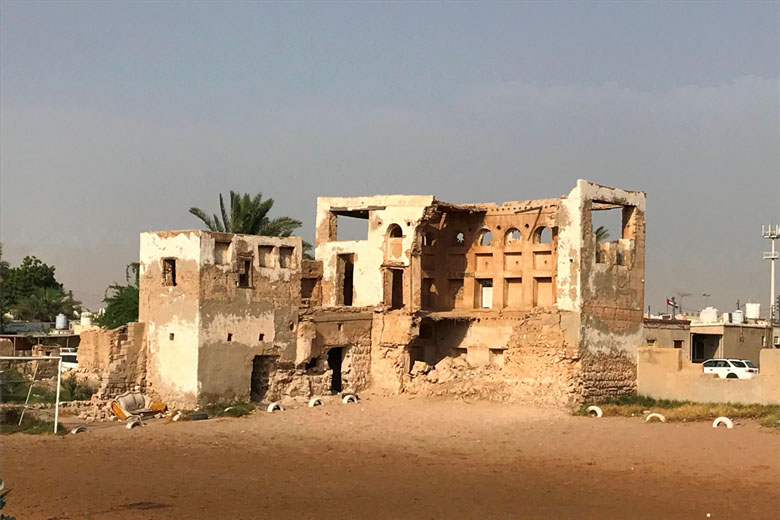The deteriorating state of Ras Al Khaimah’s old buildings, that stand out because of their architectural heritage and use of different building materials, has propelled a group of researchers and architecture students from the American University of Ras Al Khaimah (AURAK) to engage in a novel project to highlight the importance of heritage conservation.
Ras Al Khaimah’s Old Corniche area today presents a gloomy sight of deteriorating traditional buildings dotting the coastline. They were constructed more than 60 years ago, typically from traditional materials – coral stone and sea sand mixed with seashells. Today, most of them are in a state of disrepair and some are even used for storage purposes. Yet, a Royal Decree prohibits them from being demolished.
A team from American University of Ras Al Khaimah (AURAK) converts data into technical drawings, to spotlight heritage conservation
These buildings have been seen as undesirable because their economic value has diminished, while their land value has increased exponentially. In addition, the cultural significance of the buildings is not understood or appreciated by their owners or by the public.
A research team from AURAK decided to take some concrete action to address this situation. The team, comprising Dr Eman Al Assi, Eng. Abeer Abu Ra’ed, and project leader Tawfiq Abuhantash, prepared a policy paper on preserving cultural heritage and launched a pilot experiential learning project engaging architecture students in documenting select historic houses in the Old Town area. The project was funded by Al Qasimi Foundation.

Six historical houses were identified according to pre-established criteria before the students began their fieldwork. The process spanned six months, during which the students took photographs of all the components, both external and internal. They also measured and recorded the ornamentation on the walls and ceilings. To verify the accuracy of their measurements, a professional surveyor was employed.
Six historical houses were identified according to pre-established criteria before the students began their fieldwork
The data and documentation were then brought to the AURAK architectural studios, where the measurements and sketches were converted into technical drawings using specialised software, such as AutoCAD and Revit. Students were able to produce precise two-dimensional and three-dimensional drawings. Additionally, the students produced colored renderings which were exhibited to the public.
Dr. Mohamed Al Zarooni, AURAK’s Associate Provost for Research and Community Service, says: “Educating young generations about the value of heritage and the influence it has on their current lives is just as important as preserving it. One strategy is to incorporate historical building documentation into the teaching curricula of some educational programmes, such as architecture. By creating teaching modules with specific learning outcomes, students will be encouraged to have a direct encounter with their heritage and, accordingly, learn about its importance in the context of understanding modern society and culture.”

With this goal in mind, two courses from the architectural curriculum at the American University of Ras Al Khaimah — Urban Design and Conservation of Historic Architecture — have been tailored to study the urban context of Ras Al Khaimah Old Town and consider conservation strategies.
The project had a profound impact on students’ relationship with and understanding of Ras Al Khaimah’s cultural heritage.
Lama Al Qady, one of the students involved, said: “The hidden gems in the rubble of the past are visible in the traditional patterns in wall motifs, cornices, and niches. Forgotten ‘majlises’ and courtyards hold the key to studying the culture and lifestyle of past generations.”
The project had a profound impact on students’ relationship with and understanding of Ras Al Khaimah’s cultural heritage
Another student, Mohab Hamada, said: “Working on documenting old houses opened my sight to a different direction in architecture and taught me a lot about the traditional and cultural elements of the old houses and gave me an idea of how people used to live their daily lives.”

Research team leader Mr. Tawfiq Abu Hantash, Associate Professor of Architecture, Design, History and Theory said: “It is crucial to preserve these important artefacts of cultural heritage before they disappear. They represent the rich traditions and culture of past days. Therefore, documentation is an essential tool to keep a record of the historic buildings and make them available for future reference.
The American University of Ras Al Khaimah is proud to have undertaken this unique project that could contribute significantly to conservation efforts.” To learn more recommendations and proposed policies associated with the documentation of Ras Al Khaimah’s historic building, including student engagement through AURAK’s architecture programme, please refer to Al Qasimi Foundation’s policy paper.








